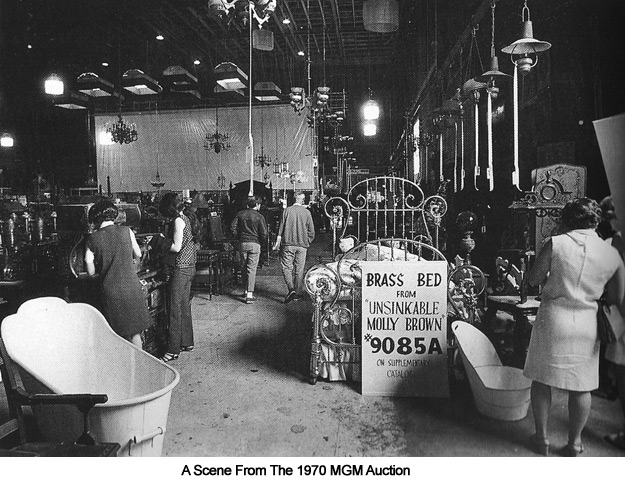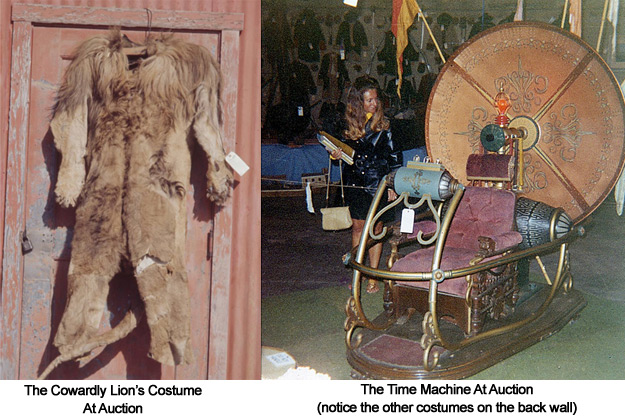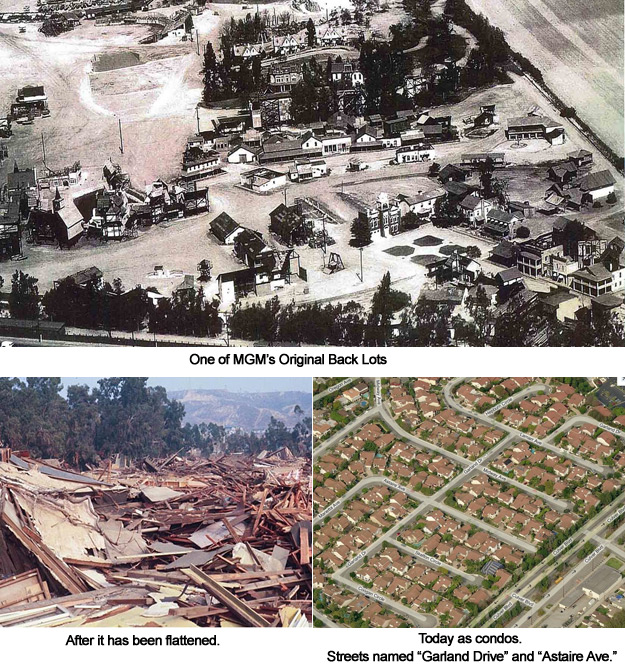Yesterday I talked about “the magical elves” of new media – how some publishing & media companies are confusing “strategy” with cost cutting. Today I want to give an example of what I mean from another industry, and another time. Inherent in this discussion is the exploration of how we value a brand and the trust it has built over the course of years.
Let’s talk about two events in 1970, and how each illustrated different approaches to treating the value of a brand’s assets. The companies are MGM and Disney, the former sold some of its most precious assets to fund the building of a Las Vegas hotel. The latter spent money to archive and preserve it’s history.
(note: huge thanks to Jim Hill for his blog post covering this topic.)
Okay, let’s dig in:
- The MGM Auction of 1970
In 1970 MGM auctioned off its entire history of costumes and props. Warehouses of items including costumes from The Wizard of Oz, Gone With the Wind, and countless other items worn by stars such as Errol Flynn, Bette Davis, James Dean, Elizabeth Taylor, Fred Astaire, Susan Hayward, Greta Garbo, Vivien Leigh, and others in some of their most famous roles. Dorothy’s dress? $1,000. Cowardly Lion’s costume? $2,400. They also sold off their historic back lots, and flattened sets used in classic MGM films. That land is now filled with faceless condos, turning history into real estate.Stories of the auction are scattered across the web. One person describes that a friend of his bought a large container of unknown costumes in the sale. Within it were two of the Lollipop Guild costumes from Wizard of Oz. This was not historic preservation, these items were sold in bulk, unmarked. How many treasures were lost in this manner? What if the person who bought it didn’t recognize them as Wizard of Oz costumes?
There is an entire website dedicated to tracking what happened to the famous Time Machine from the from the 1960 movie of the same name. One of the flying saucers from Forbidden Planet turned up in someone’s garage, considered lost for years after the MGM auction.
These items were not sold off to preserve them better or to make the MGM brand stronger – they were done so to raise funds for a hotel. The new owner of MGM had no real interest in the movie studio or its history.
Further reading on the MGM sale here.
- Disney Creates an Archive in 1970
That same year, Disney did the opposite of MGM, they created the Disney Archives. Now, it should be noted that 1970 was not necessarily Disney’s heyday, they were still building their empire. Check out the list of movies released during that time period.Disney hired Dave Smith as archivist, a position he still holds today. Jim Hill describes Dave’s role:
“Back in 1970, Smith’s duties involved regularly prowling around the studio looking for things that actually needed preserving. Which often meant opening up janitor’s closets and then finding maquettes that had been used in the production of “Snow White,” “Pinocchio” & “Fantasia.” Or – better yet – actually fishing animation cels from “The Aristocats” out of the studio’s dumpsters.”
In 1970, Disney was funding something else entirely, actually something not too dissimilar to what MGM was doing: the Walt Disney World Resort, which opened in October of 1971. 30,000 acres of swampland converted into a theme park, a project Disney worked on since 1963.
The difference is that Disney saw it’s past as something to covet, to fuel their future, not something to commoditize and offload to fund other ventures.



Why am I obsessing over these two events, and why should you care? Here are a few lessons I am considering from the examples above:
- It Takes Decades To Build a Brand, Moments to Destroy It
Today, many companies talk about their valuable “content assets” and the “communities” built over the course of decades. Media and publishing companies change hands constantly, often based on the value of their content and reputation. Like the MGM sale – one result of this is that the most valuable aspects of these brands are slowly dissipated over the years. Yes, some gems are cherished forever, but many others are lost into the ether, a shadow of what they once were – a hollow brand, existing in name only. For instance, we all know that the Gourmet brand will resurface again and again in the future as its brand name is “leveraged.” But will that name represent the expert content and authority it once did? Or is it just a label on a can? - If You Don’t Respect the Past, You Can’t Respect the Future
Many businesses that are created by passionate experts in niches are later bought by larger companies and managed by business people who only understand the financial aspect of what has been created. What can happen in this case is a shortsighted understanding of value of community and content, and short-term decisions on how to “unlock value,” where the “value” always means money. That’s fine, until that precious content and community is exploited again and again, and the reputation of the original brand has little social capital to leverage further. - Hire Leaders Not Managers
Many of the brands we covet were created by passionate experts – oddballs who knew how to take an idea and make it a reality. As time moves on, it is important to put those brands into the hands of leaders who will extend those creations, not exploit them. Who will allow them to grow, not be “managed.” Again and again, we see great brands sliced, diced, bought, sold, and merged. Sure, it’s a reality of the business world. But it shouldn’t be confused with truly creating something new. Sometimes the value of the parts are greater than the whole. - Create Something That Grows in Value Over Time
Paul Carr has been talking about this in terms of new media: questioning how our efforts online create long term value. He framed this discussion in terms of social media vs long form writing, with a great title: Thnks Fr Th Mmrs: The Rise Of Microblogging, The Death Of Posterity.“A million blogs withered and died as their authors stopped taking the time to process their thoughts and switched instead to simply copying and pasting them into the world, 140 meaningless characters at a time. The result: a whole lot of sound and mundanity, signifying nothing.”
Publishers and media companies are at similar crossroads – choosing between cheap aggregation vs the cost and creating high quality original content; between relying on social media vs building an expert marketing team.
- Don’t Turn Art Into a Commodity
The art world is a bizarre place- judged by auction prices, not the inherent revelation of art. In the end, we spend millions on paintings in order to buy transcendence. It’s well worth your time to check out the documentary “The Art of the Steal” which covers this topic in an incredibly compelling manner. When you commodify something unique, you rob the world of something. It’s a complicated topic, I don’t want to simplify it too much, but I do think it’s worth discussion.
Overall, I think I am sensitive to the tradeoff we make with success, or more specifically, revenue. Sometimes, success truly creates something that never existed before – it is a skill, a gift when that works out. But other times, there are hidden costs. In a world where quarterly numbers seem to be valued more than anything, when you take the long view, you notice what is – AND ISN’T – being created over the course of years and decades.
There is a great term – “unlocking value,” which many people use to justify a new strategy that turns art into a commodity. Be careful not only in what is created, but what is lost.
-Dan
